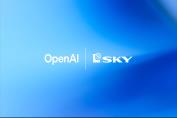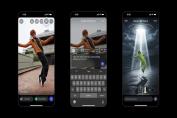
Microsoft Launches MAI-Image-1: A Fast, Photorealistic In-House AI Image Generator
- 05 November, 2025
What is MAI-Image-1 and why it matters
MAI-Image-1 is Microsoft’s first fully in-house text-to-image model, now available in Bing Image Creator and Copilot Audio Expressions. Built to deliver fast, photorealistic images with convincing lighting and rich detail, the model marks a notable shift as Microsoft expands its own MAI (Microsoft AI) family rather than relying solely on third-party models.
Where you can use MAI-Image-1
- Bing Image Creator — MAI-Image-1 is listed alongside other engines on Bing’s image creation page and app, giving users a choice of generation styles.
- Copilot Audio Expressions (Story Mode) — Microsoft pairs AI-generated images from MAI-Image-1 with AI-driven audio stories to create richer, multi-sensory experiences.
How MAI-Image-1 performs: speed and photorealism
Microsoft highlights MAI-Image-1’s combination of speed and image quality. In practical terms, that means faster iterations when you’re experimenting with prompts and more realistic outputs for subjects such as food, landscapes, and scenes with complex lighting (bounce light, reflections, soft shadows).
In my experience testing similar models, faster inference can make a big difference in creative workflows — you try a dozen variations in the time older models generate one. That fluidity often leads to better final images because you can iterate while the idea is still fresh.
How MAI-Image-1 compares to other models
On Bing’s Image Creator, MAI-Image-1 is one of three available engines; the others include OpenAI’s DALL·E 3 and GPT-4o-based generation. Early commentary from Microsoft positions MAI-Image-1 as especially good at photorealism and scenes with nuanced lighting, while larger, slower models might still edge it out on certain rare artistic styles. In short: MAI-Image-1 aims to balance speed and realism in a pragmatic way for everyday creators.
Microsoft’s broader MAI strategy
MAI-Image-1 is the latest addition to a growing set of Microsoft-developed models. Earlier releases included MAI-Voice-1 (speech) and MAI-1-preview (text), signaling Microsoft’s strategy to increase internal capacity for core AI tasks. This is happening alongside continued use of external providers: Microsoft’s Copilot currently supports OpenAI’s GPT-5 and even offers Anthropic’s Claude as an option in some products.
Geographic availability and regulatory notes
Microsoft's leadership has said the model will roll out to the EU “soon.” Given evolving regulatory frameworks and local data-use requirements, availability may be staged. If you rely on these tools for professional creative work, keep an eye on official Microsoft channels for precise region-by-region rollout timing.
Practical examples and a quick case study
Example scenario: a food photographer needs hero images for a seasonal menu. Using MAI-Image-1 inside Bing Image Creator, they can prompt for “close-up of glazed lemon tart under warm bounce light, shallow depth of field, plate reflection, 85mm lens look.” Within a few quick iterations they get several photorealistic candidates. One of those images becomes the base for final retouching in a traditional editor — a workflow that saves hours.
Hypothetical small business case: A local café with limited budget can generate polished visual concepts for social ads without booking a full photo shoot. Then they can use the best generated image as a mood board when they do a shoot later — helpful and cost-effective.
Ethics, accuracy, and creative control
As with all image models, output quality depends on prompt clarity and the model’s training. AI-generated images can introduce artifacts or misrepresentations, especially in people and trademarked items. Microsoft’s documentation highlights the model’s strengths, but creators should still verify factual details and apply responsible use principles.
Key takeaways
- Speed + quality: MAI-Image-1 focuses on rapid, photorealistic generation.
- Integrated experiences: Available in Bing Image Creator and Copilot Audio Expressions for multi-modal storytelling.
- Part of a larger push: Microsoft is increasing in-house model development alongside partnerships with OpenAI and Anthropic.
- Practical use cases: Great for fast concept art, marketing visuals, and story-driven image/audio combos.
Further reading and sources
For Microsoft’s announcement and details on MAI-Image-1, see Microsoft’s blog post introducing the model. For coverage of Microsoft’s in-house AI strategy and how this fits alongside OpenAI and Anthropic collaborations, see reporting from reputable tech outlets like The Verge.[Source]
In my experience, the most valuable thing about a fast, photorealistic model is how it changes the creative loop — less waiting, more experimenting. Try it, and you might find yourself refining ideas you otherwise wouldn’t have explored.
Learn more in our guide to generative AI trends.







